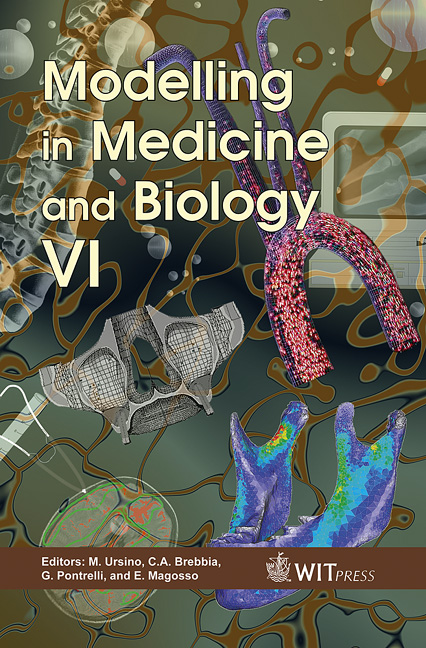Modelling The Viscoelastic Properties Of Coagulating Blood
Price
Free (open access)
Transaction
Volume
8
Pages
8
Published
2005
Size
366 kb
Paper DOI
10.2495/BIO050241
Copyright
WIT Press
Author(s)
P. R. Williams, R. L. Williams, K. Hawkins, C. Wright, A. Evans & H. Simpkin
Abstract
The rheological behaviour of coagulating human blood has been measured using a multiple frequency rheometrical technique known as Fourier Transform Mechanical Spectroscopy (FTMS). The results indicate that coagulating blood, prior to the point of incipient clot formation, can be modelled by a modified form of the Gross-Marvin ‘ladder’ model, and the benefits of such modelling for blood coagulation are discussed. Keywords: rheology, blood coagulation, discrete relaxation spectra. 1 Introduction A comprehensive understanding of the relationships between the microstructure of blood clots and their viscoelastic properties has been a goal of clinical and scientific research for more than 50 years. This goal remains largely unrealised, due to the difficulty of describing the complex gel microstructure of blood clots in conventional morphological terms, and a lack of appropriate rheological techniques. The significance of this issue arises from findings that various pathologies are associated with changes in the viscoelasticity of blood clots [1]. The present inability to relate these changes to underlying microstructural changes prevents the development of a sufficient understanding of the processes involved. The most widely used rheological instrument used to study blood coagulation is an oscillating-cylinder rheometer called a thromboelastograph (TEG). Since 1948, it has been used to monitor clot ‘rigidity’ in terms of cylinder displacement
Keywords
rheology, blood coagulation, discrete relaxation spectra.





